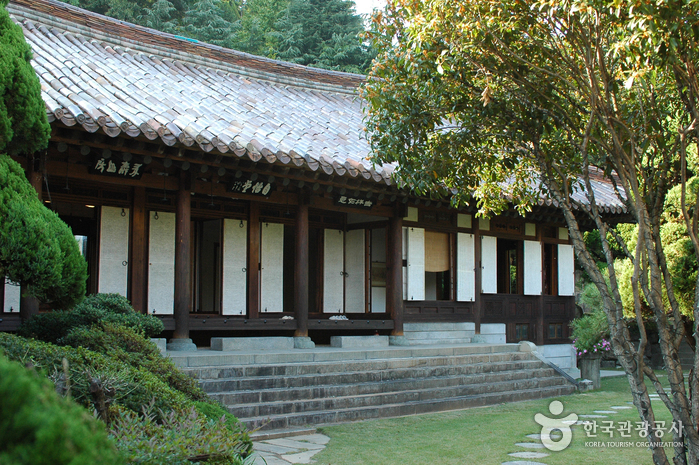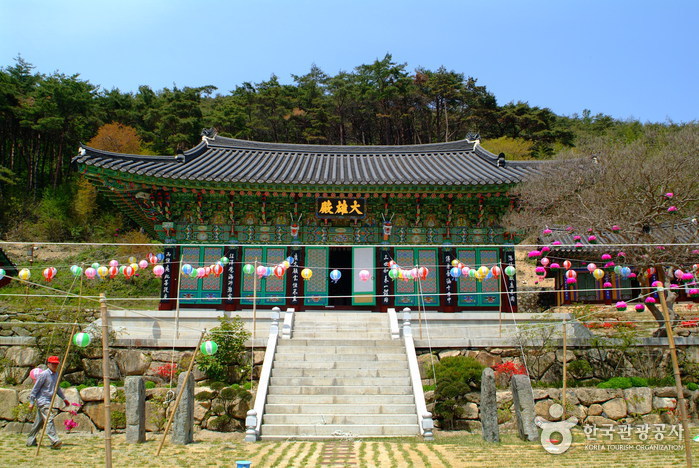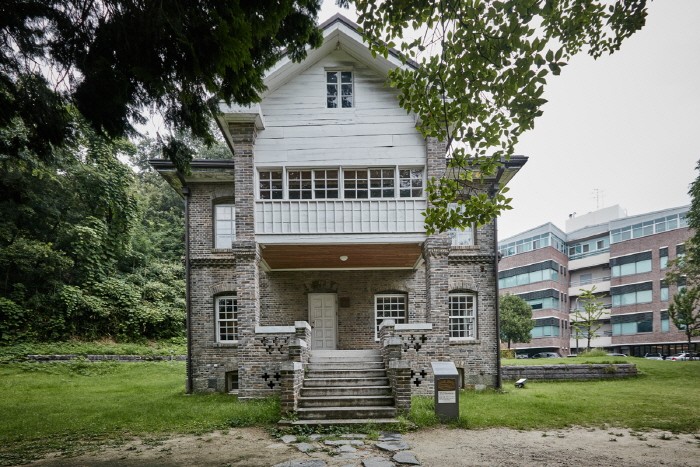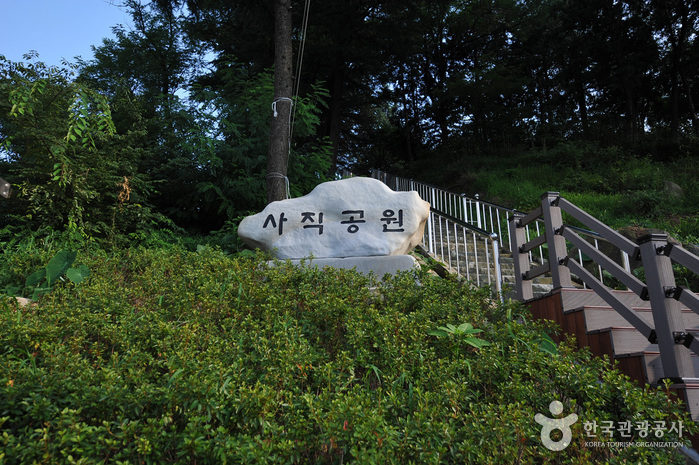House of Choi Seung-hyo (최승효가옥)
5.2 Km 13824 2023-03-08
29-4, Yangchon-gil, Nam-gu, Gwangju
+82-62-607-2332
The House of Choi Seung-hyo is a traditional residential building located on the southeastern slopes of Yangnimsan Mountain. The rectangular building is open to the east, has 8 kan (the space between two pillars) in the front and 4 kan to the sides, and is graced by a traditional hipped and gabled roof. Since the building was constructed in the 1920s, it offers a valuable glimpse into the architectural style of Korean houses at the end of the Japanese colonial period. Choi Sang-hyeon was an activist who offered his attic as a place of refuge for other activists.
ABC-Mart - Gwangju Chungjang-ro Branch [Tax Refund Shop] (ABC마트 GS광주충장로)
5.2 Km 0 2024-04-16
GS Gwangju Chungjang-ro Branch, 83, Chungjang-ro, Dong-gu, Gwangju
-
MLB - Chungjang-ro Branch [Tax Refund Shop] (엠엘비 충장로점)
5.2 Km 0 2024-04-16
82-2, Chungjang-ro, Dong-gu, Gwangju
-
Manyeonsa Temple - Hwasun (만연사(화순))
5.2 Km 20049 2020-03-27
367, Jingak-ro, Hwasun-gun, Jeollanam-do
+82-61-374-2112
Manyeonsa Temple is known to have been built in 1208, the fourth year of King Heejong’s (r. 1204-1211) reign during the Goryeo dynasty.
It is said that Manyeonsa Temple was constructed by Great Monk Manyeon after he dreamt of 16 nahans, Buddha’s disciples, preparing to build a temple to preserve Buddha’s statue when taking a short nap during his journey back to Songwangsa Temple in Jogyesan Mountain from Wonhyosa Temple in Mudeungsan Mountain. When he awoke from his nap, he noticed that snow had completely covered his nearby surroundings except for the exact spot where he lied down, which remained so warm that snow had melted and steam was rising from the ground. He then settled in the area by building a dugout where he continued to practice asceticism and later built Manyeonsa Temple.
The temple was partially destroyed during the Korean War (1950) and restoration efforts were made in 1978.
May 18 Democratic Uprising Archives (5•18민주화운동 기록관)
5.2 Km 0 2024-01-03
221 Geumnam-ro, Dong-gu, Gwangju
The May 18 Democratization Movement was a righteous uprising by citizens that took place in Gwangju for ten days from May 18 to 27 in 1980. The May 18 Democratic Uprising Archives was established in 2015 at the former Gwangju Catholic Center, a historical site of May 1980, to systematically collect and preserve the May 18 Democratization Movement's heritage that led to the democracy in Korea today. Through the efforts of Gwangju citizens, visitors can see the original records of the May 18 Democratization Movement, inscribed on the UNESCO Memory of the World in 2011. Visitors can also view the records with a guide or through online exhibitions. The May 18 Democratic Uprising Archives is a place that preserves the history of all Korean citizens.
Ej Ost - Chungjang-ro (No. 2) Branch [Tax Refund Shop] (EJ OST 충장로2호)
5.3 Km 0 2024-04-17
80-3, Chungjang-ro, Dong-gu, Gwangju
-
Missionary Wilson's House (우일선 선교사 사택)
5.3 Km 14512 2019-11-12
20, Jejung-ro 47beon-gil, Nam-gu, Gwangju
+82-62-607-2333
Missionary Wilson’s House is a two-story brick building that sits upon the eastern foothills of Yangnimsan Mountain. Known as the oldest surviving Western-style house in Gwangju, the house is an icon of modern culture and architecture in Korea. The house was built by an American missionary named Wilson in the 1920s (exact date unknown) and was the home of the Wilson family while they stayed in Korea. When the family completed their work in Korea, they sold the house for a very cheap price with the stipulation that the house continued to be used for missionary purposes. The house fell into the possession of the General Assembly of Chonnam Presbyterian Church of Korea in 1986 and now serves as the home office for the Presbyterian Church of Korea.
The square-shaped house consists of a living room, a family room, a kitchen, and a bathroom (1F), several bedrooms (2F), and storage areas and a boiler room (B1). The fact that the entrance of the house faces east is said to be a result of the prevailing architectural culture of Korea at that time. A Netherland-style house built with 55-milimeter thick, gray bricks, the first and second stories are delineated on the exterior with an eye-catching band of bricks.
Nature Republic - Gwangju Chungjang-ro Branch [Tax Refund Shop] (네이처리퍼블릭 광주충장로점)
5.3 Km 0 2024-04-16
80-8, Chungjang-ro, Dong-gu, Gwangju
-
S-Market - Gwangju Chungjang-ro Branch [Tax Refund Shop] (에스마켓 광주충장로)
5.3 Km 0 2024-04-18
73, Chungjang-ro, Dong-gu, Gwangju
-
Gwangju Sajik Park (사직공원 (광주))
5.3 Km 28029 2022-08-05
49, Sajik-gil, Nam-gu, Gwangju
+82-62-652-3236
Sajik Park is located at the previous site of Sajikdan Altar, a ritual site to pray for peace and prosperity during the Three Kingdoms Era. In the 1960s, the site was home to Sajik Zoo, with the ritual being abandoned in 1894 and the altar in disrepair. However, in 1991, it was decided to move the zoo to another location and begin restoring the site. It was reopened in April 1994, 100 years after the last ritual.
Sajik Park is landscaped with various trees and flower beds. The park blooms pink and white with cherry blossoms annually in mid-April. During this time, the municipality of Gwangju installs lighting in the trees for citizens to enjoy the blossoms late into the night. The park has become established as a favorite rest area for Gwangju citizens. The park houses several attractions including Gwangju Broadcast Station (KBS), Memorial Tower for Policemen, Yangpajeong Pavilion, and Palgakjeong Pavilion overlooking downtown Gwangju.

![ABC-Mart - Gwangju Chungjang-ro Branch [Tax Refund Shop] (ABC마트 GS광주충장로)](http://tong.visitkorea.or.kr/cms/resource/83/2886883_image2_1.jpg)
![MLB - Chungjang-ro Branch [Tax Refund Shop] (엠엘비 충장로점)](http://tong.visitkorea.or.kr/cms/resource/00/2886900_image2_1.jpg)

![Ej Ost - Chungjang-ro (No. 2) Branch [Tax Refund Shop] (EJ OST 충장로2호)](http://tong.visitkorea.or.kr/cms/resource/96/2886896_image2_1.jpg)

![Nature Republic - Gwangju Chungjang-ro Branch [Tax Refund Shop] (네이처리퍼블릭 광주충장로점)](http://tong.visitkorea.or.kr/cms/resource/03/2886903_image2_1.jpg)
![S-Market - Gwangju Chungjang-ro Branch [Tax Refund Shop] (에스마켓 광주충장로)](http://tong.visitkorea.or.kr/cms/resource/68/2886868_image2_1.jpg)

 English
English
 한국어
한국어 日本語
日本語 中文(简体)
中文(简体) Deutsch
Deutsch Français
Français Español
Español Русский
Русский